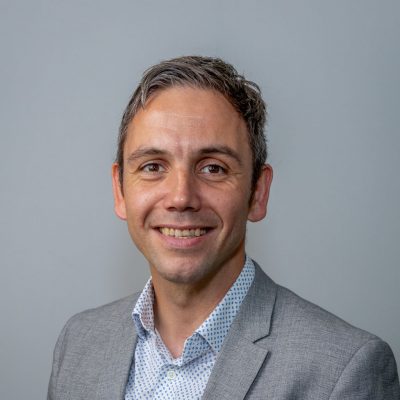 Abstract: Mathematical and computational modelling approaches can quantify the mechanics & mechanical environment of soft biological tissues under physiological and pathological loading. These tools can quantify ‘mechanical stimuli’ inputs to algorithms that control growth and remodelling (G&R) of the tissue to simulate adaptation to altered environmental conditions. In this talk, I will overview a rate-based constrained mixture G&R modelling approach which was developed to create the first computational model of aneurysm evolution [1]; I will then summarise its sophistications and applications over the past 20 years. In general, the modelling approach is as follows: the constitutive model of the tissue accounts for the individual natural reference configurations of cells and matrix components; a model of the organ/tissue is defined/calibrated to initially be in homeostasis in the physiological loaded configuration; subsequent tissue loss/damage or changes to the mechanical environment can change the distribution of mechanical stimuli from homeostatic setpoints and drive G&R processes that lead to the progression of disease or the adaptation to a new homeostatic state. Illustrative applications of the approach will include fluid-solid-growth frameworks for modelling intracranial aneurysm evolution [2], in vivo-in vitro-in silico modelling of bladder adaption to outlet obstruction [3] and a conceptual chemo-mechano-biological model of cartilage evolving in health, disease and treatment [4]. Outlook for future research and clinical translation of the models will be discussed.
Abstract: Mathematical and computational modelling approaches can quantify the mechanics & mechanical environment of soft biological tissues under physiological and pathological loading. These tools can quantify ‘mechanical stimuli’ inputs to algorithms that control growth and remodelling (G&R) of the tissue to simulate adaptation to altered environmental conditions. In this talk, I will overview a rate-based constrained mixture G&R modelling approach which was developed to create the first computational model of aneurysm evolution [1]; I will then summarise its sophistications and applications over the past 20 years. In general, the modelling approach is as follows: the constitutive model of the tissue accounts for the individual natural reference configurations of cells and matrix components; a model of the organ/tissue is defined/calibrated to initially be in homeostasis in the physiological loaded configuration; subsequent tissue loss/damage or changes to the mechanical environment can change the distribution of mechanical stimuli from homeostatic setpoints and drive G&R processes that lead to the progression of disease or the adaptation to a new homeostatic state. Illustrative applications of the approach will include fluid-solid-growth frameworks for modelling intracranial aneurysm evolution [2], in vivo-in vitro-in silico modelling of bladder adaption to outlet obstruction [3] and a conceptual chemo-mechano-biological model of cartilage evolving in health, disease and treatment [4]. Outlook for future research and clinical translation of the models will be discussed.
References:
[1] Watton, Hill & Heil (2004) A Mathematical Model for the Growth of the Abdominal Aortic Aneurysm, BMMB, 3:98-113.
[2] Teixeira et al. (2020) Modeling intracranial aneurysm stability and growth: an integrative mechanobiological framework for clinical cases. BMMB, 19:2413–2431.
[3] Cheng et al. (2022) A constrained mixture-micturition-growth (CMMG) model of the urinary bladder: Application to partial bladder outlet obstruction (BOO), JMBBM, 134: 105337.
[4] Rahman et al. (2023) A chemo-mechano-biological modelling framework for cartilage evolving in health, disease, injury, and treatment, CMPB, 231: 107419.
Biographical Sketch: Paul Watton is Head of the Complex Systems Modelling Group and Professor of Computational and Theoretical Modelling at the Dept. of Computer Science & Insigneo Institute for in silico Medicine at the University of Sheffield, UK. He also holds an adjunct position with the Dept. of Mech. Eng. and Materials Science, University of Pittsburgh, US. He has a mathematical background (BSc Pure & Applied Mathematics, MSc Mathematical Logic, PhD Applied Mathematics) and his research focuses on modelling the biomechanics & mechanobiology of soft-biological tissues with application to disease progression and treatment.



 Prof. Jackie Sung was awarded the 2024 AIAA Energy Systems Award for his significant contribution in the broad field of energy systems, and specifically for his outstanding contributions to flame dynamics and low-temperature chemistry for developing fuel-flexible, ultra-low emission, efficient combustion energy systems using conventional and alternative fuels.
Prof. Jackie Sung was awarded the 2024 AIAA Energy Systems Award for his significant contribution in the broad field of energy systems, and specifically for his outstanding contributions to flame dynamics and low-temperature chemistry for developing fuel-flexible, ultra-low emission, efficient combustion energy systems using conventional and alternative fuels. Abstract: Recent decades have seen rapid development in all manufacturing technologies, including additive manufacturing (AM). This has raised the need for design methods to leverage the new, increasingly complex fabrication possibilities. Topology optimization has the potential to generate new high-performing design solutions since it is a free-form design method that does not require a preconceived notion of the final layout. It uses computational mechanics and optimization tools to generate improved designs. For operating designs to perform as predicted, the used model must capture the material behavior. Additionally, the planned manufacturing process might induce material characteristics and design limitations that should be considered as the design is generated. This talk focuses on identifying and incorporating behavioral and manufacturing aspects within the design process. Different strategies for integration within topology optimization will be discussed. This includes consideration of manufacturing-induced material characteristics, which is illustrated through tailoring design to material extrusion-based AM. In material extrusion, a nozzle moves across a build plate and deposits a material bead on a 2D slice of the design. These processes typically induce some degree of anisotropy through weak(er) bonding between adjacent beads. To improve the manufacturability of large-scale designs, the application of a Mixed Integer Linear Programming formulation is discussed for highly restricted volume scenarios. Finally, a new design framework is introduced in which the interactive participation of the design engineer is enabled to resolve more complex mechanic phenomena.
Abstract: Recent decades have seen rapid development in all manufacturing technologies, including additive manufacturing (AM). This has raised the need for design methods to leverage the new, increasingly complex fabrication possibilities. Topology optimization has the potential to generate new high-performing design solutions since it is a free-form design method that does not require a preconceived notion of the final layout. It uses computational mechanics and optimization tools to generate improved designs. For operating designs to perform as predicted, the used model must capture the material behavior. Additionally, the planned manufacturing process might induce material characteristics and design limitations that should be considered as the design is generated. This talk focuses on identifying and incorporating behavioral and manufacturing aspects within the design process. Different strategies for integration within topology optimization will be discussed. This includes consideration of manufacturing-induced material characteristics, which is illustrated through tailoring design to material extrusion-based AM. In material extrusion, a nozzle moves across a build plate and deposits a material bead on a 2D slice of the design. These processes typically induce some degree of anisotropy through weak(er) bonding between adjacent beads. To improve the manufacturability of large-scale designs, the application of a Mixed Integer Linear Programming formulation is discussed for highly restricted volume scenarios. Finally, a new design framework is introduced in which the interactive participation of the design engineer is enabled to resolve more complex mechanic phenomena.


